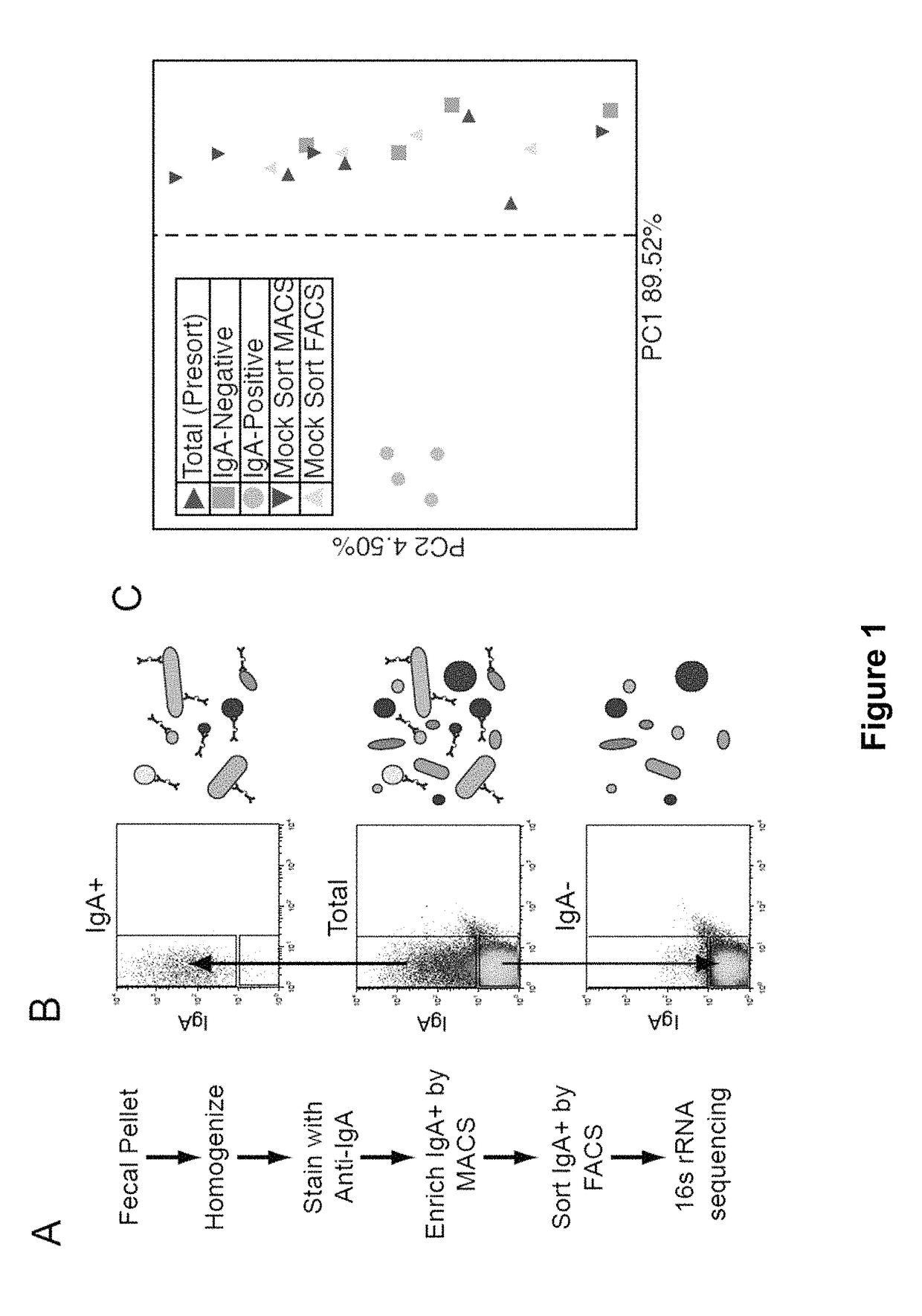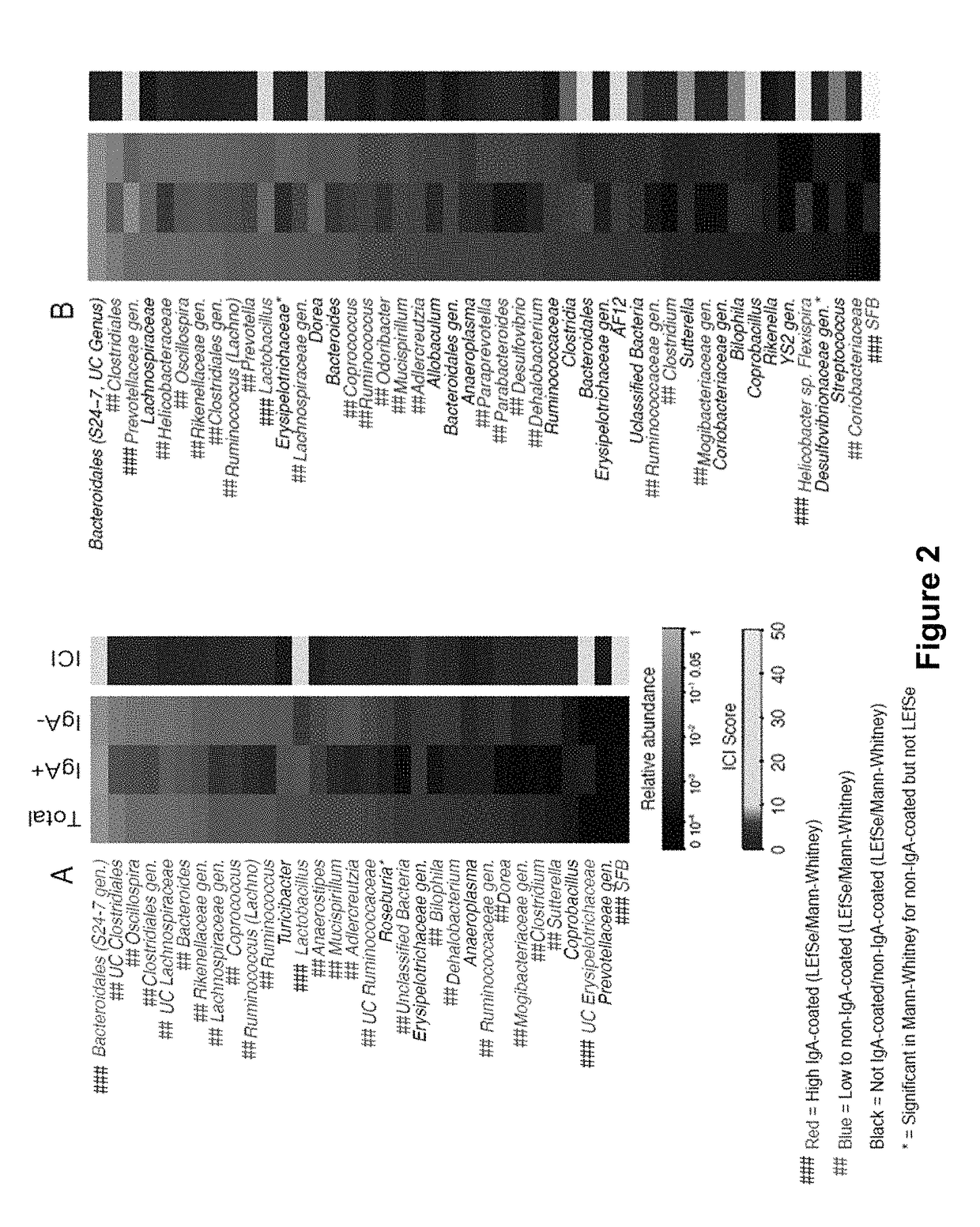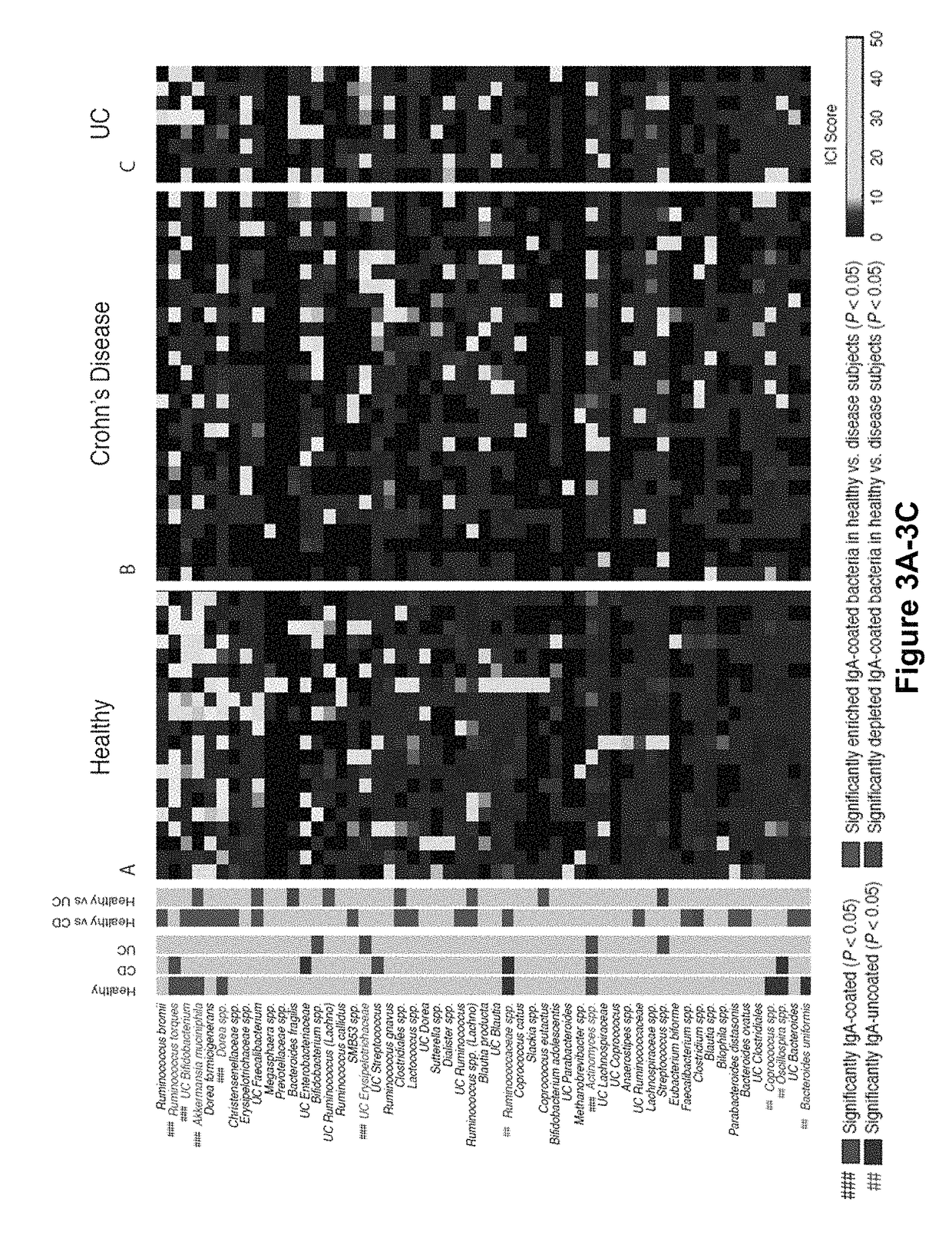Compositions and methods for identifying secretory antibody-bound microbes
a technology of secretory antibodies and microorganisms, which is applied in the field of compositions and methods for identifying secretory antibody-bound microorganisms, can solve the problems of difficult identification of specific pathobionts responsible for driving the development of disease in humans, and achieve the effect of reducing the number of at leas
- Summary
- Abstract
- Description
- Claims
- Application Information
AI Technical Summary
Benefits of technology
Problems solved by technology
Method used
Image
Examples
experimental examples
[0123]The invention is further described in detail by reference to the following experimental examples. These examples are provided for purposes of illustration only, and are not intended to be limiting unless otherwise specified. Thus, the invention should in no way be construed as being limited to the following examples, but rather, should be construed to encompass any and all variations which become evident as a result of the teaching provided herein.
[0124]Without further description, it is believed that one of ordinary skill in the art can, using the preceding description and the following illustrative examples, make and utilize the compounds of the present invention and practice the claimed methods. The following working examples therefore, specifically point out the preferred embodiments of the present invention, and are not to be construed as limiting in any way the remainder of the disclosure.
example 1
ng of the Intestinal Microbiota in Health and Disease
[0125]Immunoglobulin A represents one of the major mechanisms by which the adaptive immune system controls commensal bacteria in the gastrointestinal tract. However, little is known about the specificity of the intestinal IgA response. To better understand interactions between the immune system and the microbiota and to identify intestinal bacteria that preferentially stimulate immune responses, IgA coating of the intestinal microbiota was examined by separating IgA-coated and non-coated bacteria and performing 16S rRNA sequencing. While it was found that each individual displays a unique set of IgA coated bacterial species, IgA coating of select bacterial taxa was conserved within the healthy human population. Notably, inflammatory bowel disease (IBD) patients and mice with a colitogenic dysbiosis displayed dramatically altered patterns of IgA coating, suggesting dysregulation of host-microbiota homeostasis, and showed high coati...
PUM
| Property | Measurement | Unit |
|---|---|---|
| Tm | aaaaa | aaaaa |
| Tm | aaaaa | aaaaa |
| Tm | aaaaa | aaaaa |
Abstract
Description
Claims
Application Information
 Login to View More
Login to View More - R&D
- Intellectual Property
- Life Sciences
- Materials
- Tech Scout
- Unparalleled Data Quality
- Higher Quality Content
- 60% Fewer Hallucinations
Browse by: Latest US Patents, China's latest patents, Technical Efficacy Thesaurus, Application Domain, Technology Topic, Popular Technical Reports.
© 2025 PatSnap. All rights reserved.Legal|Privacy policy|Modern Slavery Act Transparency Statement|Sitemap|About US| Contact US: help@patsnap.com



